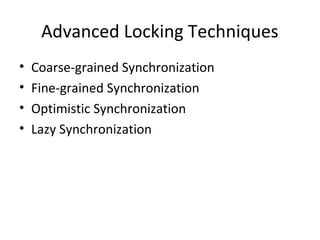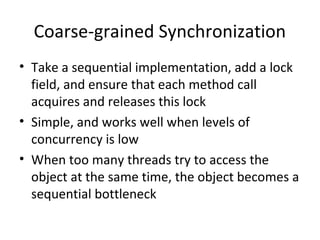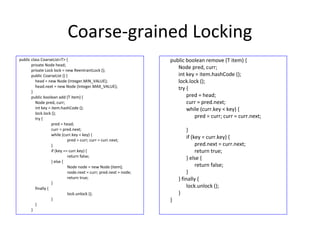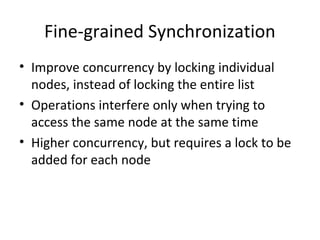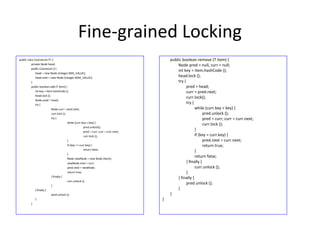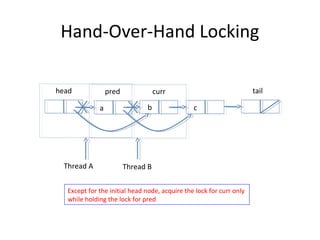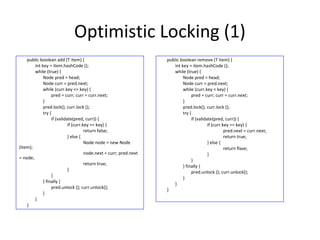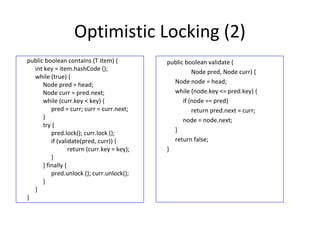This document discusses different locking techniques for concurrent data structures:
- Coarse-grained locking locks the entire data structure for each operation, limiting concurrency.
- Fine-grained locking locks individual nodes to improve concurrency but requires per-node locks.
- Optimistic locking performs operations lock-free until validation, when it locks affected nodes.
- Lazy locking delays changes like removal by marking nodes instead of immediately changing pointers, allowing lock-free traversal.
